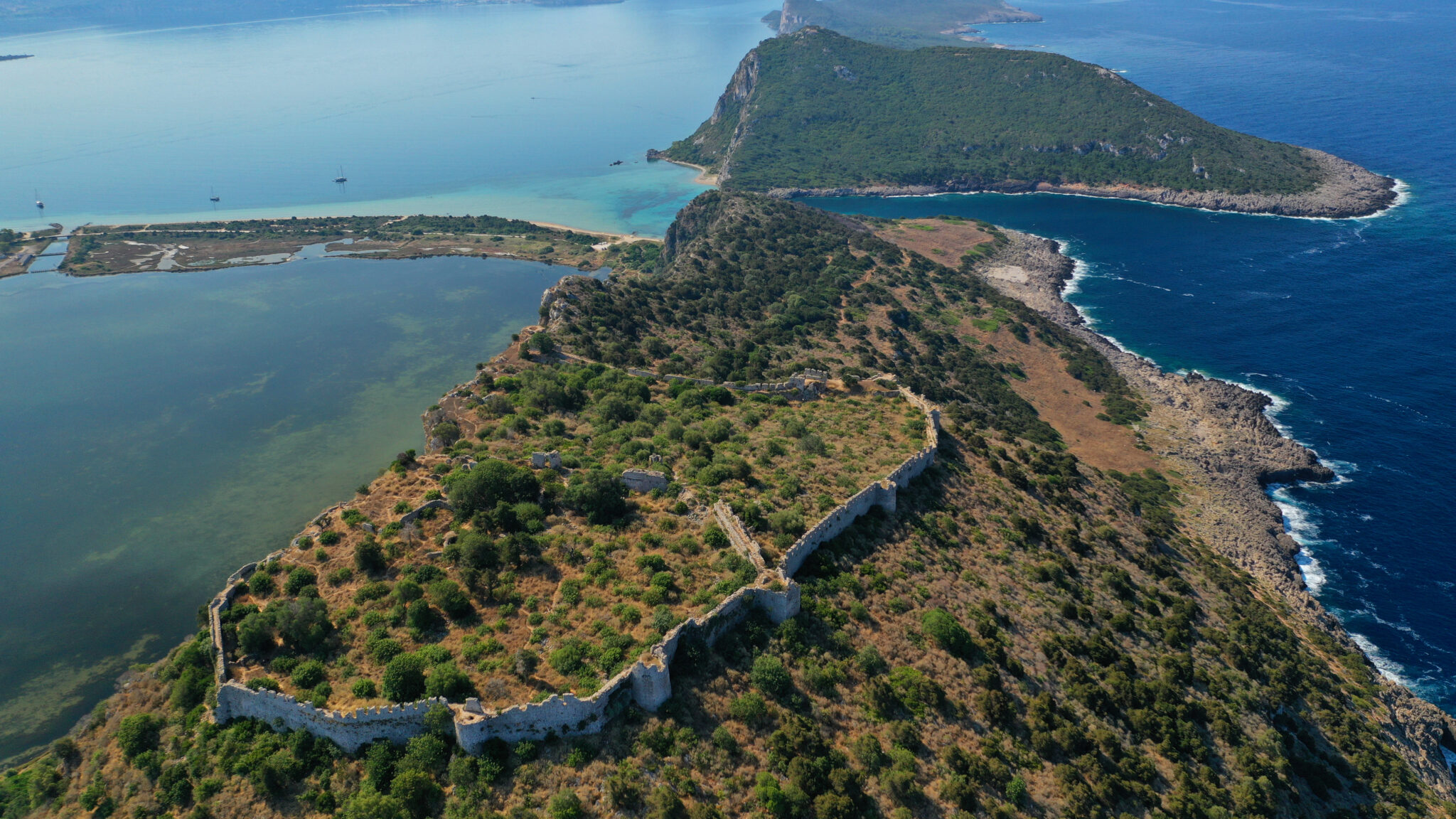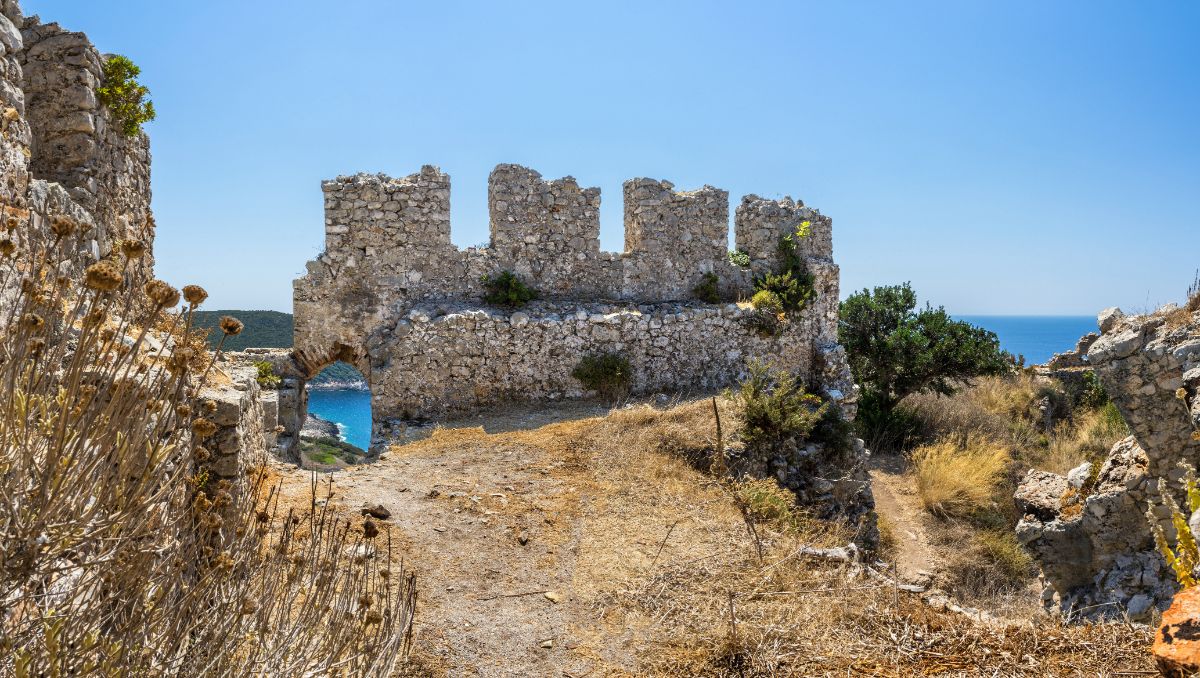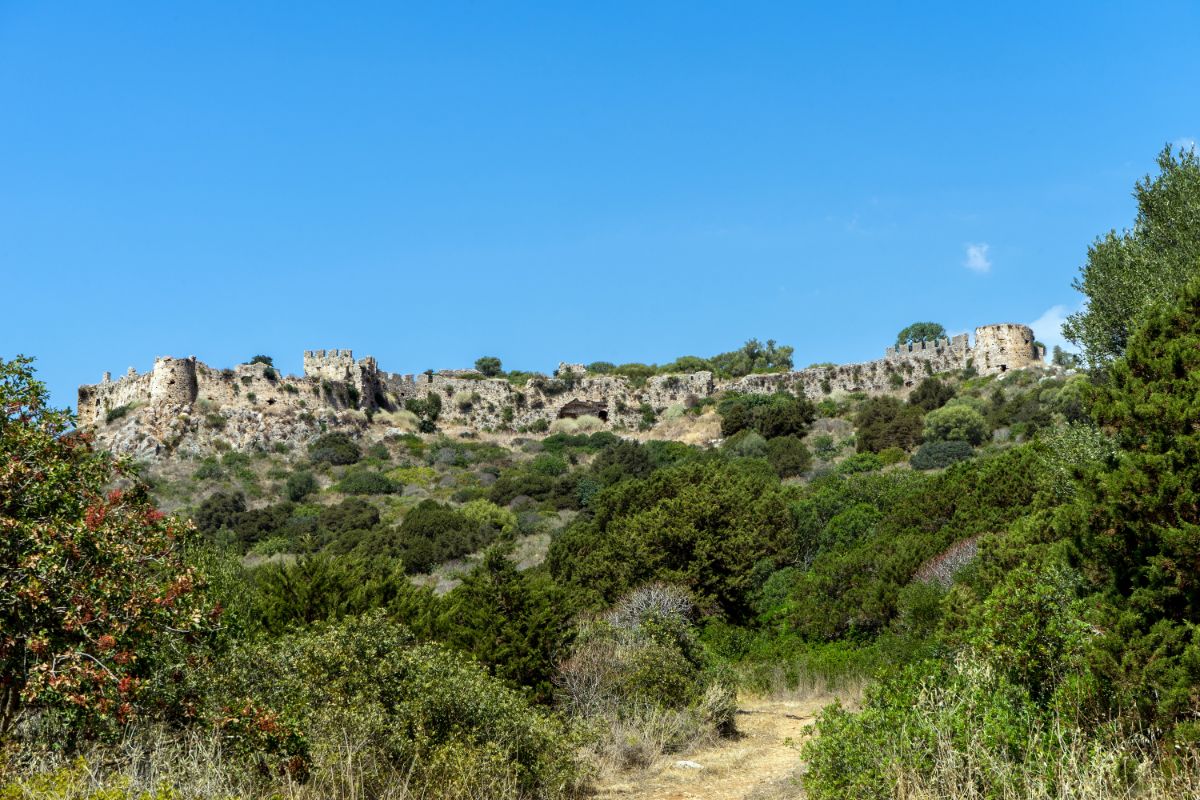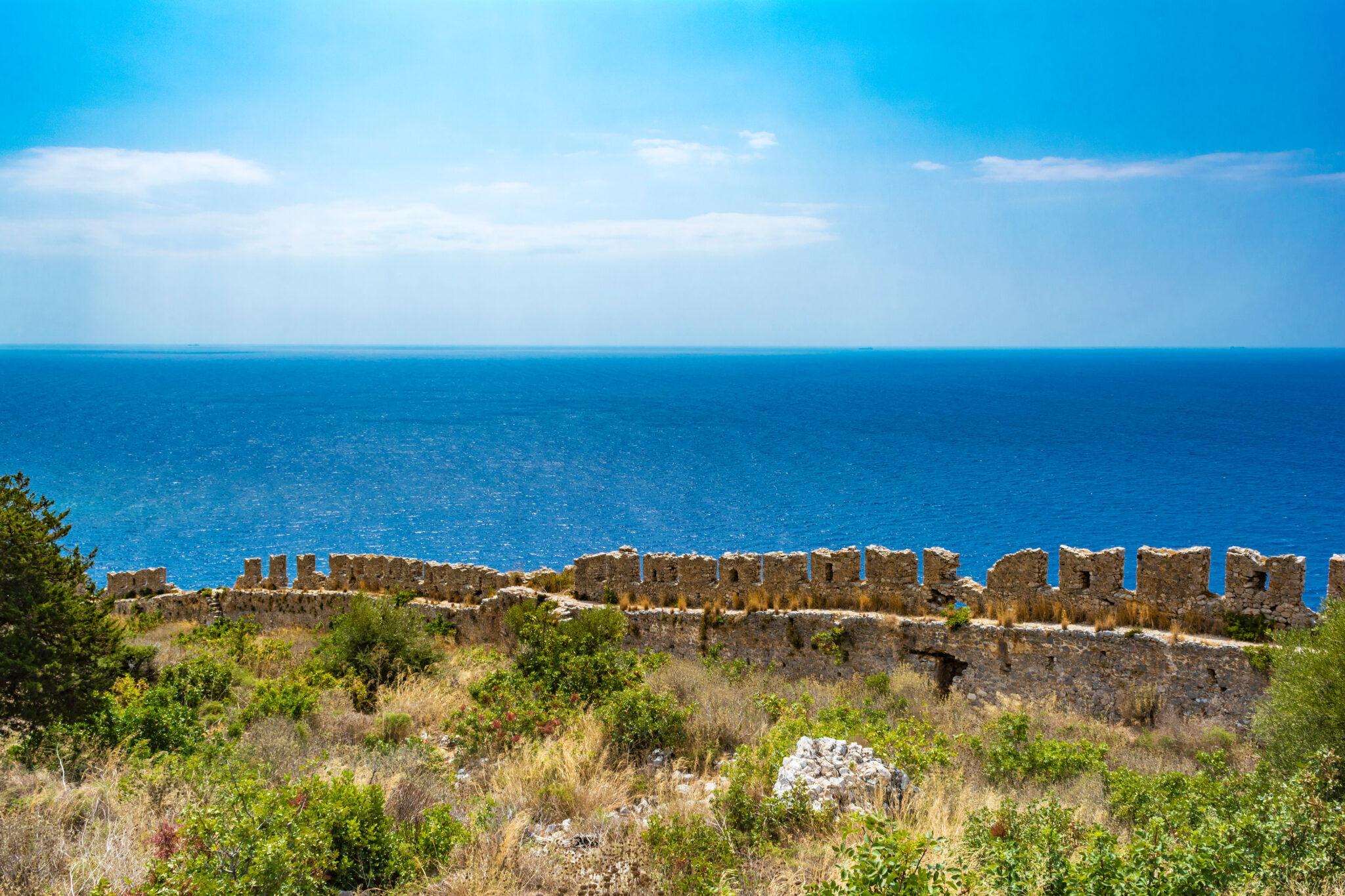The region of Messenia, in the Peloponnese, is home to several well-preserved and easily accessible fortresses such as Methoni, Koroni, and Niokastro. However, for those who seek a touch of adventure, the somewhat neglected Old Castle of Paleokastro Navarino in Pylos presents an enticing challenge. While it requires an uphill trek, the reward is a breathtaking, unhindered 360-degree view of the horizon from its crumbling ramparts.
Overlooking the Bay of Navarino, the Old Castle, also known as Palaionavarino, provides such a spectacular view that locals have been known to claim you can spot the lights of Malta on a clear night. Its initial builders, the Franks, strategically located it on the ancient hill of Koryfasion to defend against persistent enemies and constant sieges. Standing at the castle’s highest point, you can see the entire region.
To the west, the Ionian Sea extends beyond the eye can see. To the north, the perfect curve of Voidokilia bay is visible. To the east, the lagoon of Gialova lies, and to the northeast, the Bay of Navarino with Pylos. To the south, you can see the notorious islet of Sphacteria.
As you ascend, you’ll navigate through dense shrubbery brushing against your legs, tree branches hindering your path, wildflowers adding a splash of colour to the landscape, and the terrain growing increasingly difficult with elevation. In summer, the heat can be severe, so it’s advisable to begin your hike early.
The ruins that dot the path to the summit provide a silent testament to the castle’s history. Until the mid-16th century, it was a vital fortress in the region’s history. Intricate spider webs, the uneven path underfoot, and a sense of history accompanying your every step make this journey as challenging as it is rewarding. This isn’t just a hike; it’s a time-traveling adventure.
Built in the 13th century by the Crusader Nicholas II de Saint Omer, a French-origin lord of Thebes, the castle was erected on an ancient fortification’s remains. Its construction continued under skilled Venetian engineers in the 15th century, and the Ottomans completed it.
After their defeat in the Battle of Lepanto in 1573, the Ottomans began to construct the Niokastro (New Castle) on the bay’s opposite side to control the southern entrance. From then on, the once imposing castle lost its significance and earned the moniker Paleokastro (Old Castle).
Unlike other Peloponnesian forts, which were overtaken by the Ottomans from 1460, this fortress remained with the Venetians. Its defenders surrendered it to avoid destruction when Sultan Bayezid II and his army captured and destroyed Methoni in 1500.
Seen from a drone, Paleokastro Navarino resembles a trapezoid and once covered a sprawling 50 acres. The ruins of today largely represent its 16th-century form, and the varying construction phases and modifications are evident in its remnants.
While parts of the outer walls and some towers still stand, inside the walls, you’ll see only ruins due to a lack of restoration works. At the northern section’s peak, where the ancient acropolis likely stood, Saint Omer’s palace was constructed.
Below the castle’s walls, you’ll find the Cave of Nestor. This cave is believed to have once been connected to the castle and is steeped in mystery and ancient intrigue. Its existence was first documented by the traveller Pausanias and initially explored in 1874 by Heinrich Schliemann.
To reach the Old Castle, there are two trails. One begins from Voidokilia, and the other from Divari beach on the castle’s southern side. Both trails offer different perspectives and varying glimpses of the castle’s former grandeur.
Read also:
The Heraion of Perachora and the Cape of Melagavi










